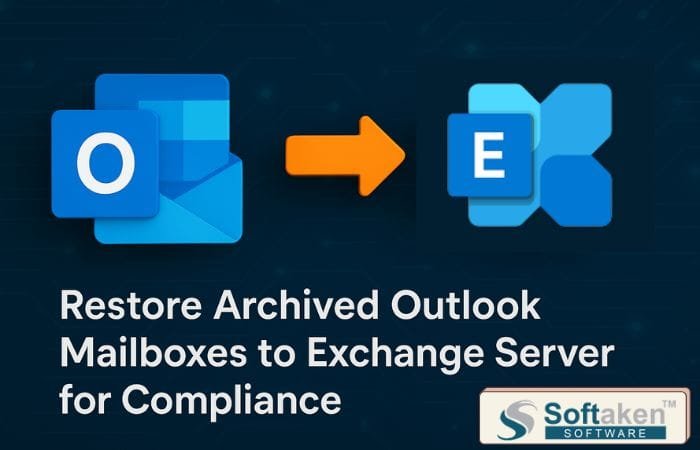In today’s data-driven world, the ability to extract meaningful insights from vast amounts of information is crucial for businesses, organizations, and individuals alike. From analyzing customer behavior and market trends to optimizing operations and decision-making, data plays a central role in driving innovation and success. However, raw data alone is often overwhelming and difficult to interpret. This is where scripting languages come into play, providing powerful tools and techniques to transform raw data into actionable insights. In this article, we’ll explore the language of data and how scripting enables us to unlock the potential of raw information.
Understanding Scripting Languages:
Scripting languages are programming languages designed for automating tasks, manipulating data, and performing various computational tasks. Unlike compiled languages like C++ or Java, scripting languages are typically interpreted at runtime, allowing for faster development and prototyping. Some popular scripting languages used for data analysis and manipulation include Python, R, JavaScript, and Perl. These languages offer a wide range of libraries, frameworks, and tools tailored to data processing, analysis, and visualization.
Data Acquisition and Preprocessing:
The first step in extracting insights from data is acquiring and preprocessing the raw information. This involves gathering data from various sources such as databases, APIs, web scraping, or files in different formats (e.g., CSV, JSON, XML). Scripting languages provide libraries and tools to facilitate data acquisition and preprocessing tasks, such as reading and writing files, parsing data structures, cleaning and filtering data, and handling missing values or errors. For example, Python’s Pandas library is widely used for data manipulation and preprocessing tasks, offering powerful tools for cleaning, transforming, and analyzing tabular data.
Exploratory Data Analysis (EDA):
Once the data has been preprocessed, the next step is to explore and analyze its characteristics and patterns. Exploratory Data Analysis (EDA) involves visualizing data, identifying trends, correlations, and outliers, and gaining insights into the underlying structure of the data. Scripting languages offer a plethora of libraries and tools for conducting EDA, such as Matplotlib, Seaborn, and Plotly for data visualization in Python, and ggplot2 and ggvis in R. These libraries enable analysts and data scientists to create informative and visually appealing charts, graphs, and plots that help uncover hidden insights within the data.
Statistical Analysis and Modelling:
Once the initial exploration is complete, scripting languages enable users to perform more advanced statistical analysis and modeling techniques to extract deeper insights from the data. Whether it’s calculating descriptive statistics, conducting hypothesis tests, or building predictive models, scripting languages provide a rich ecosystem of libraries and frameworks to support a wide range of analytical tasks. For example, Python’s SciPy library offers a comprehensive suite of statistical functions and algorithms, while R’s extensive collection of packages includes tools for linear regression, time series analysis, and machine learning.
Automation and Scalability:
One of the key advantages of scripting languages in data analysis is their ability to automate repetitive tasks and scale workflows to handle large volumes of data. By writing scripts and workflows, analysts and data scientists can streamline data processing pipelines, automate data cleaning and transformation tasks, and deploy models and analyses in production environments. Scripting languages also offer integration with other tools and platforms, allowing users to leverage cloud computing resources, distributed computing frameworks, and containerization technologies for scalable and efficient data processing and analysis.
Collaboration and Reproducibility:
Scripting languages promote collaboration and reproducibility by providing a transparent and reproducible workflow for data analysis. By writing scripts and documenting each step of the analysis, analysts and data scientists can share their work with colleagues, peers, and stakeholders, facilitating collaboration and knowledge sharing. Moreover, scripting languages enable researchers to reproduce and validate results, ensuring the reliability and integrity of the analysis.
Python has emerged as one of the most popular and versatile programming languages globally, renowned for its simplicity, readability, and extensive libraries. As the demand for Python skills continues to rise across various industries, individuals seeking to enhance their proficiency often turn to training institutes for structured learning and guidance. In India, there is a plethora of Python training institutes offering courses for beginners, professionals, and enthusiasts alike. In this section, we’ll explore the landscape of the Python training institute in Kolkata, India, highlighting key features, benefits, and considerations for prospective learners.
Understanding Python Training Institutes:
Python training institutes offer courses and programs designed to teach individuals the fundamentals of Python programming, advanced concepts, and specialized topics like web development, machine learning and automation, data science, and much more. The institute also offers data science course in Noida, Delhi & all other cities in India, structured learning paths, practical exercises, projects, and mentorships to help learners build practical skills and confidence in Python programming.
Features and Benefits of Python Training Institutes:
- Comprehensive Curriculum: Python training institutes typically offer a comprehensive curriculum covering fundamental concepts such as syntax, data types, control structures, functions, and object-oriented programming (OOP), as well as advanced topics like web development frameworks (e.g., Django, Flask), data analysis libraries (e.g., Pandas, NumPy), and machine learning frameworks (e.g., TensorFlow, PyTorch).
- Experienced Instructors: Many Python training institutes employ experienced instructors who are proficient in Python programming and have real-world industry experience. These instructors provide expert guidance, personalized feedback, and mentorship to help learners overcome challenges and achieve their learning goals.
- Hands-on Learning: Hands-on learning is a key component of Python training institutes, allowing learners to apply theoretical concepts to practical projects and assignments. Institutes often provide access to development environments, IDEs, and collaborative platforms to facilitate hands-on coding exercises and project work.
- Flexible Learning Options: Python training institutes offer flexible learning options to accommodate learners’ schedules and preferences. Whether it’s classroom-based instruction, online courses, boot camps, or self-paced learning, institutes provide a variety of formats to suit different learning styles and needs.
- Industry Recognition and Certification: Many Python training institutes offer industry-recognized certification programs that validate learners’ skills and knowledge in Python programming. These certifications can enhance learners’ resumes, credibility, and career prospects in the job market.
Read also What are the main reasons why one should learn Python Programming?
Considerations for Choosing a Python Training Institute:
- Reputation and Reviews: Research the reputation and reviews of Python training institutes to gauge their credibility, quality of instruction, and satisfaction among past learners. Look for institutes with positive reviews, testimonials, and endorsements from industry professionals and alumni.
- Curriculum and Course Structure: Evaluate the curriculum and course structure of Python training institutes to ensure they cover relevant topics, align with your learning goals, and provide hands-on experience and practical projects.
- Instructor Expertise: Assess the qualifications and expertise of instructors at Python training institutes to ensure they possess relevant industry experience, teaching skills, and proficiency in Python programming.
- Learning Format and Flexibility: Consider the learning format and flexibility offered by Python training institutes, including factors such as class schedules, online vs. offline instruction, interactive sessions, and access to resources and support.
- Placement Assistance and Career Support: Look for Python training institutes that offer placement assistance, career counseling, and networking opportunities to help learners transition into the workforce and advance their careers in Python programming.
Conclusion:
In conclusion, scripting languages play a critical role in transforming raw data into actionable insights, empowering businesses, organizations, and individuals to make informed decisions and drive innovation. From data acquisition and preprocessing to exploratory analysis, statistical modeling, and automation, scripting languages provide a powerful toolkit for extracting value from data. By leveraging the language of data, analysts and data scientists can unlock the potential of raw information, uncover hidden patterns and trends, and gain a deeper understanding of the world around us. Whether you’re a seasoned data professional or just starting your journey into data analysis, mastering scripting languages is essential for success in today’s data-driven landscape.






AI Development Services encompass a broad range of offerings, from machine learning models that predict consumer behavior to natural language processing systems that enhance customer service interactions. By leveraging the power of data, these services enable businesses to gain actionable insights, automate repetitive tasks, and create adaptive systems that learn and evolve over time.
https://www.daffodilsw.com/ai-development-services/
As an AI development service provider, a company typically offers expertise in developing smart applications that are embedded with AI capabilities. This includes integrating AI into existing business processes, developing AI-powered products from scratch, and providing consultative insights to leverage AI for competitive advantage.
https://www.daffodilsw.com/ai-development-company/
Healthcare software development services are specialized offerings that cater to the unique technological needs of the healthcare industry. https://www.daffodilsw.com/healthcare-software-development-services/
UI/UX Design Services refer to the professional offerings focused on creating user interfaces (UI) and user experiences (UX) for digital products like websites, mobile apps, and software applications. These services aim to make digital products not only aesthetically pleasing but also functional, intuitive, and user-friendly.
https://www.daffodilsw.com/ui-ux-design-services/